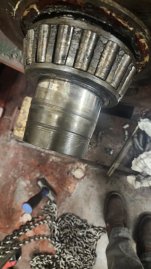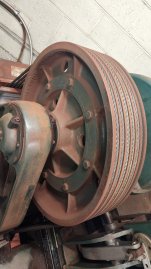ElevatorGov
Plastic
- Joined
- Feb 13, 2024
- Location
- Virginia
I'm no machinest by any means so I have a few questions. Currently working on an old Otis geared machine, (have attached a few pictures) one of the pedestal bearings went out and ruined the spider assembly. Long story short got a new one in place but the bearings that were sent Timken 643 measured at 2.746 but should have a measurement of 2.750 and the shaft is at 2.753. I've tried heating the bearings to 250F but had no luck getting it to go on. I have ordered a new set of bearings incase I got shipped a bad run. But any insight on bearing interference references would be much appreciated.



